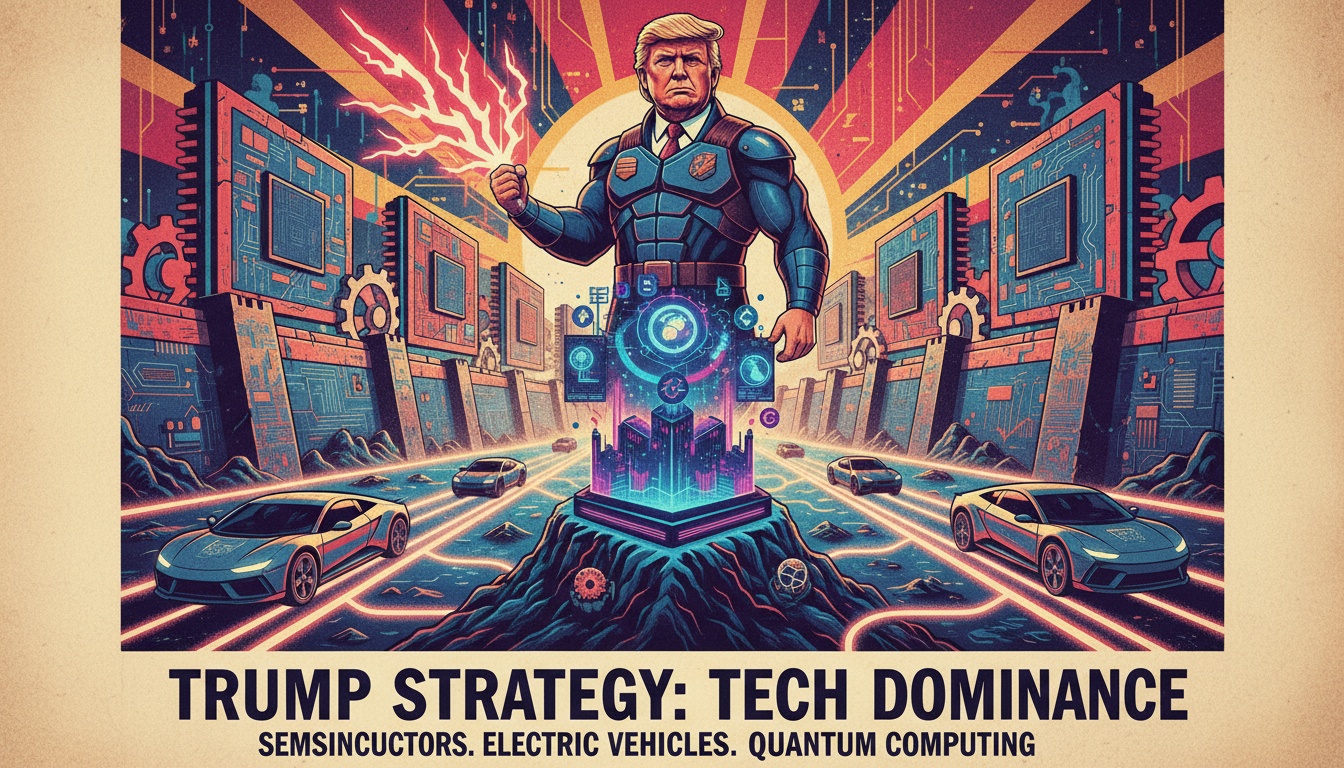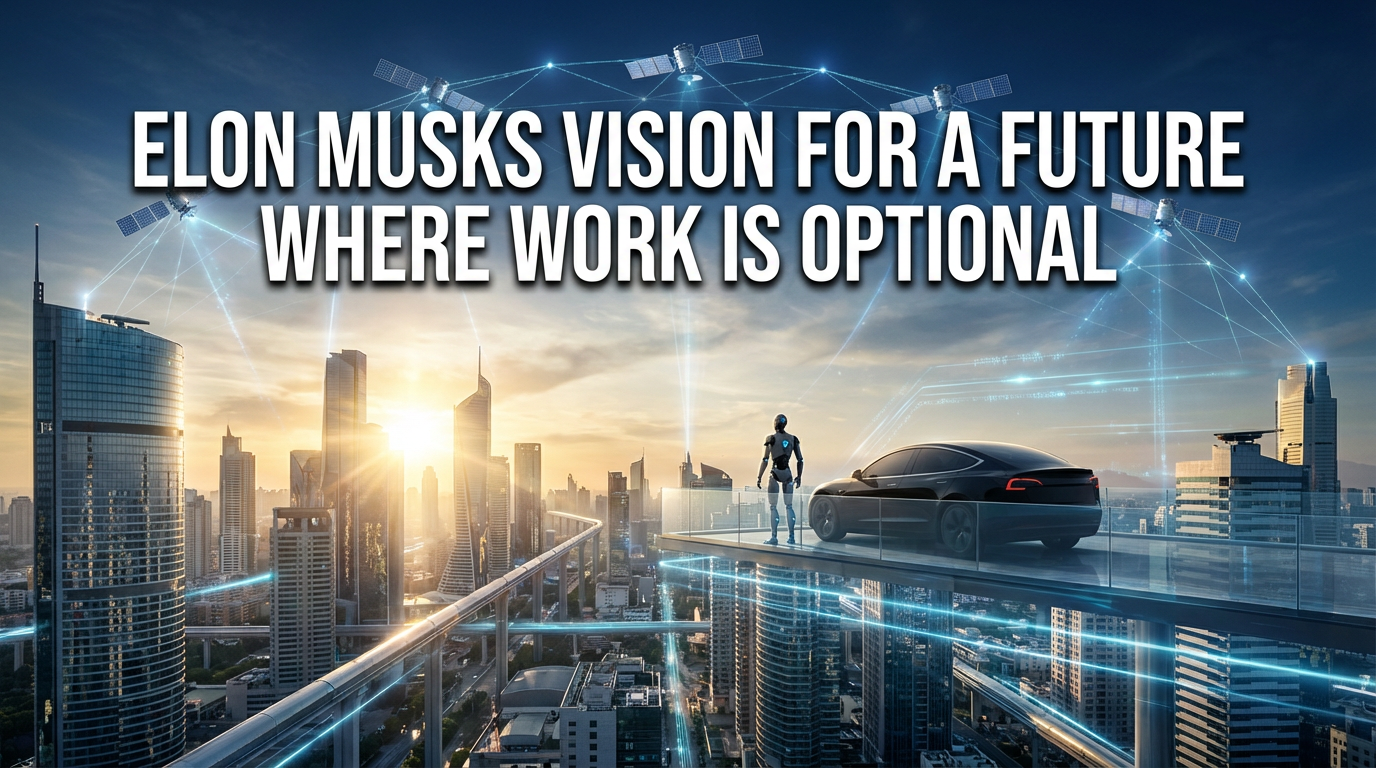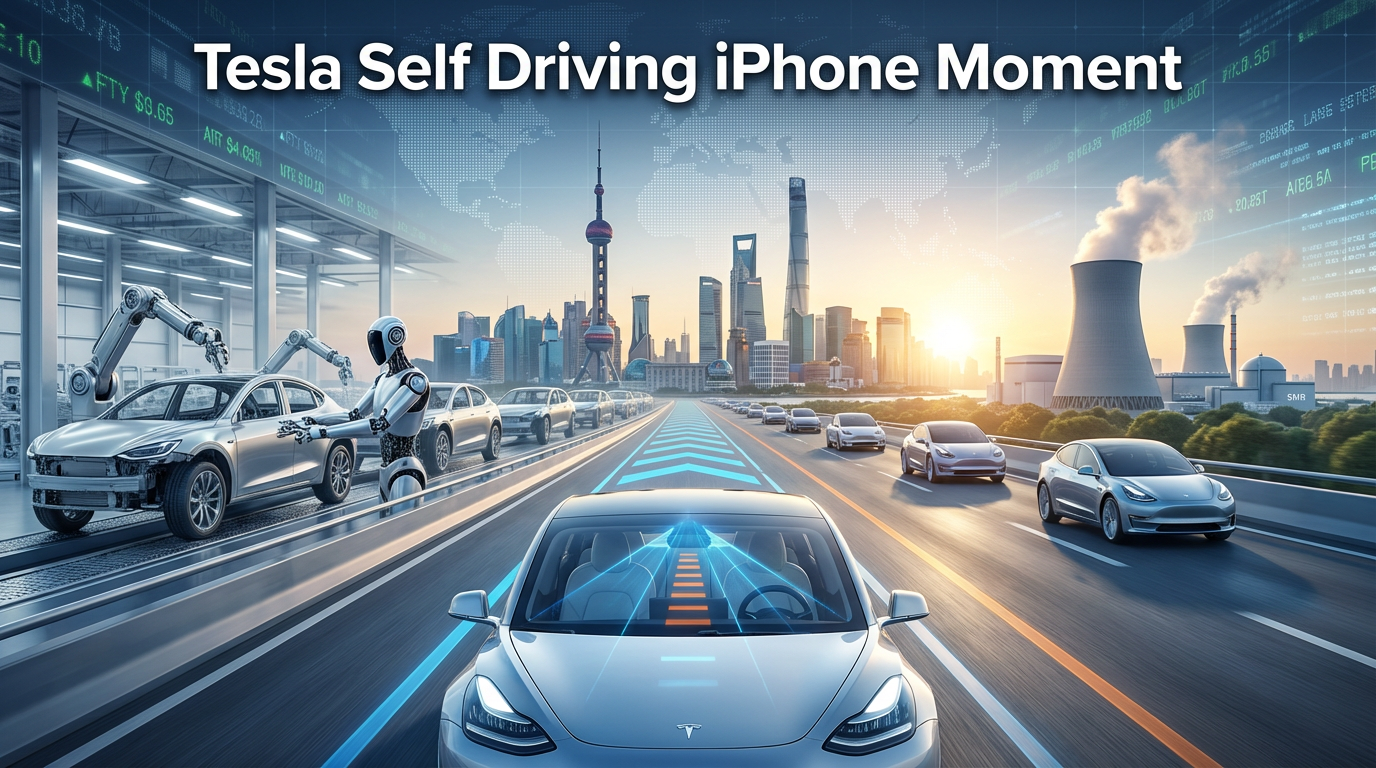*Source: 자동차 미생 Auto Engineer American Life
트럼프 대통령의 진짜 목적
● Trump’s Strange Policies Unveiled, Tech Dominance Goal
The Real Purpose Behind Trump’s ‘Strange’ Policies: A Full-Scale US Effort for Technological Supremacy — Analyzing the Strategy to Bring EVs, Semiconductors, AI, Quantum, and Robotics to the US
Key Points in This Article
The Trump administration (and the policy direction influenced by it) superficially employs ‘protectionist and nationalist’ measures such as tariffs, visas, and manufacturing reshoring, but the real goal is to secure ‘technological supremacy.’This article categorizes and analyzes Peter Thiel’s ideological influence, electric vehicles and batteries, semiconductors and AI chips, quantum computing, robotics, drones and the defense industry, key materials (lithium, rare earths, etc.), and financial subsidies and nationalization tools.It provides a particularly critical interpretation (Trump’s ‘time-buying’ strategy and the integration of the technological ecosystem) not often covered by other news outlets.Summarizes the latest insights on the US economy, semiconductors, AI, EVs, and supply chain all in one article.
Background: Why It Seems Like ‘Abandoning Globalization’ Now — The Influence of Peter Thiel
Peter Thiel (founder of Palantir) posited a core thesis: “What important truth do very few people agree with?” — Thiel asserts that technology itself is more crucial than globalization.There are evaluations that this perspective significantly influenced Trump’s policies.Thus, the apparent measures (tariffs, visa restrictions, manufacturing reshoring) can all be interpreted as tools for a technology-first strategy.The goal isn’t to abandon global division of labor, but to stop the ‘outflow of important technology’ and ‘restructure the technological ecosystem within the US.’
Policy and Strategy Analysis by Group
-
Electric Vehicles and BatteriesAs countries go all-in on the transition to electric vehicles, the supply chains of batteries and materials (lithium, cobalt, etc.) have emerged as strategic assets.The US seeks to draw production related to batteries and electric vehicles into the country through tariffs, import restrictions, and subsidies.The aim isn’t just to bring back manufacturing but to secure core battery technology and production capabilities in the US, ensuring industrial and security leadership in the future.In response to China’s large-scale investments and ecosystem expansion (batteries, completed cars), the strategy is to secure competitiveness over time and capital.
-
Semiconductors and AI SemiconductorsSemiconductors are already at the heart of the supremacy battle.The US is providing massive subsidies and incentives to attract the production of advanced chip manufacturing facilities and processes, such as HBM and AI accelerators, domestically (example: encouraging investments from TSMC and Samsung in the US).Policy-wise, in addition to export controls and tariffs that block technology transfer to China, the supply chain is reorganized by attracting fabs (factories) to the US.Chips associated with AI (artificial intelligence semiconductors) have significant industrial and military impact, thus are of high priority.
-
Artificial Intelligence (AI)AI isn’t merely software but an ecosystem that combines hardware, data, talent, and production infrastructure.The US aims to secure ‘AI dominance’ by integrating talents, data, and chips necessary for AI development.The visa policy sends signals of bringing in only “real core talents,” while maintaining flexible pathways (high-paying sponsors, preferential treatment) allowing domestic companies to secure needed talents.
-
Quantum ComputingQuantum is still in its early stages of commercialization but holds immense strategic value.The US is strengthening efforts to focus quantum hardware and software R&D domestically in the long term.Since quantum technology significantly impacts encryption, simulations, communications, etc., national investment and security controls accompany it.
-
Robotics, Drones, and the Defense Industry (New Weapons)Drones, robots, and autonomous systems are areas where civilian and military domains overlap.The US encourages the production of key technologies such as tactical drones and industrial robots, capable of low-cost and mass production, to reduce foreign dependencies and produce within the US.This is a strategic measure to secure ‘digital and robotic forces,’ not just traditional weapons systems.
-
Key Resources and Materials (Lithium, Rare Earths, etc.), and Nationalization and SubsidiesTo weaken the structure of relying solely on foreign sources for raw materials needed for batteries and semiconductors, the US directly intervenes in strategic assets (e.g., the case of acquiring a stake in MP Materials) or channels capabilities through subsidies for domestic extraction and refining.This too is a move toward stabilizing the supply chain.
Means: Tariffs, Visas, Subsidies, Nationalization — A ‘Time-Buying’ Strategy
On the surface, tariffs raise prices and increase consumer costs, but the purpose is to change competitive dynamics, allowing time for ‘domestic production’ capability within the US.Visa restrictions and high-paying sponsor policies appear to abandon the ‘accepting all talents’ model, but in reality, are intended to selectively secure high-grade core talent.Massive subsidies, tax benefits, and direct investments (including nationalization) are financial means to rapidly nurture the technological ecosystem (fabs, R&D, prototype production).Ultimately, short-term costs (tariffs, subsidies, fiscal deficits) are interpreted as ‘strategic expenditure’ for securing long-term technological dominance.
Implications for Korea — What We Need to Prepare
The US’s technology-first strategy is both a threat and an opportunity for Korea.Korean companies already play a key role in semiconductors, EV batteries, AI talent, and advanced materials, but US-led domestic production inducement and technological and supply chain reorganization could shake Korean companies’ positions in the global value chain.Policy Recommendations:
- While clearly establishing a strategic partnership with the US in core technology areas (semiconductors, batteries, AI), protect and enhance domestic core capabilities.
- Strengthen domestic talent training and return policies in response to talent leakage and visa policy changes.
- Diversify rare material and refinement capabilities (multilateral supply chains) and invest in domestic processing and recycling industries.
- Design industry-security policies integratively in line with increased defense-security technology cooperation.
The Most Important Insight Not Often Covered by Other News Outlets
The ‘strange’ policies of Trump aren’t aimed at protectionism but are ‘time-buying and ecosystem realignment’ strategies to prevent the overseas dissemination of core strategic technologies (EV batteries, semiconductors, AI, quantum, robotics) and consolidate them within the US to establish long-term technological supremacy.In short, tariffs, visas, nationalization, and subsidies are all tools crafted to achieve one big goal (technological dominance).
Policy and Investment Implications (Checklist for Practitioners and Investors)
- Corporations: When entering the US market, prioritize ‘local production and R&D’ options.
- Investors: Pay attention to US investments and related stocks (fab construction, equipment, materials) related to semiconductors, AI semiconductors, batteries, and quantum.
- Policymakers: Do not be swayed by short-term trade news (trade deficits, shutdowns, etc.) and prepare negotiation and response strategies based on the big picture of ‘technology holding and supply chain realignment.’
- Talent Policy: Simultaneously attract high-level research personnel channels and nurture domestic talent (university-industry-institute collaboration).
Conclusion
The short-term noise in US economic policy (tariffs, visas, fiscal issues) is ultimately part of a ‘technology-centered’ strategy.In future key areas such as electric vehicles, semiconductors, artificial intelligence, quantum computing, and robots/drones, the US seeks to rebuild its domestic base regardless of cost.Korea and its companies, investors, and policymakers must realign their strategies based on this big picture.
< Summary >
US tariffs, visas, and manufacturing inducement policies are strategic tools for securing technological supremacy, not protectionism.It is possible to analyze that Peter Thiel’s ‘technology-first’ perspective had a significant influence on Trump’s policies.Core areas: Electric vehicles and batteries, semiconductors and AI chips, quantum computing, robotics, drones (including defense), key materials.Means: Tariffs, visa restrictions, subsidies, nationalization, etc., for the redistribution of the ‘US technology ecosystem.’Korea should respond with technological and supply chain diversification and strategic cooperation with the US, while strengthening domestic capabilities.
[Related Articles…]US Semiconductor Reorganization and Korea’s Response StrategyRisks and Opportunities in the Electric Vehicle Battery Supply Chain



